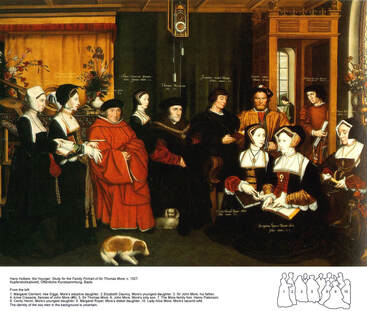I suppose it's all a form of propaganda of which the Tudor Rose is an excellent example. This symbol appears in many images of Elizabeth I and proves the importance of symbolism, she, like her father and grandfather needed to reinforce their right to the throne of England and must have seriously thought it a brilliant way of getting their point across. I have read of a portrait of Elizabeth, aged only fourteen, which was a gift to her brother Edward VI, where her finger marks the page of a book is representative of her Protestantism, did children so young as these two monarchs really understand all this?
A common item such as a sieve in Tudor times represented virginity, did every Tudor courtier and foreign visitor know that? The thorn-less rose is another example of virginity and ermine is a symbol of purity and virtue. In one painting of Elizabeth, we can see a snake or serpent on the sleeve of her dress which has a heart-shaped ruby in its mouth. The serpent is thought to represent wisdom and the ruby Elizabeth’s heart, all this is said to imply that the Queen’s wisdom controls her emotions.
My favourite of all has to be the use of eyes and ears, which can be seen in the image above, they have been stitched into the gown of Elizabeth's dress and evidently represent omniscience meaning that Elizabeth was able to hear and see all. I honestly looked at it as just a fabric pattern and missed the meaning totally, how many people of Elizabeth's day had to spend hours looking for hidden meanings in all her paintings, and why did they not know all these things about her anyway?



 RSS Feed
RSS Feed
